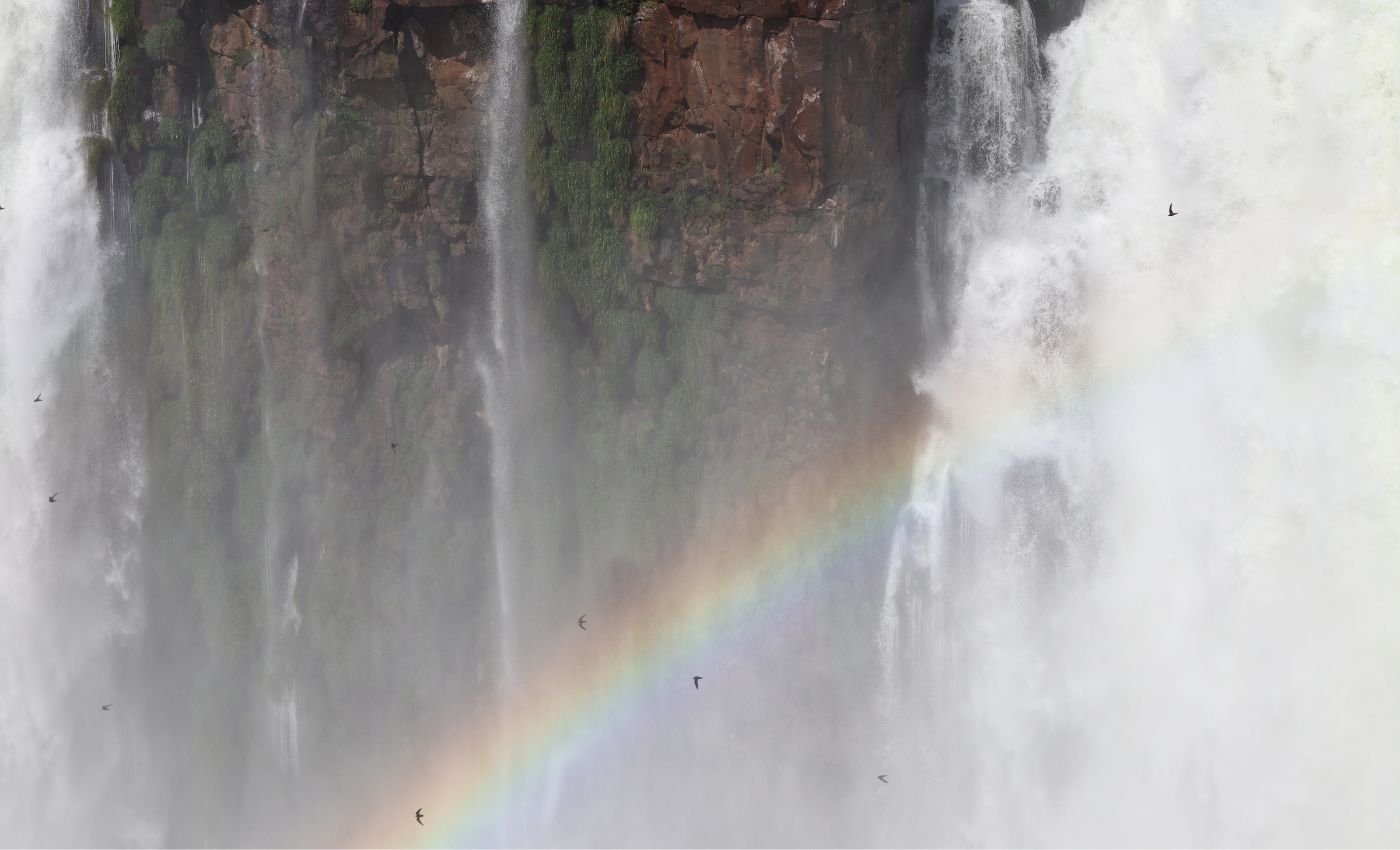
Best Iguazu Falls Itinerary for Both Sides of the Border
“If there is magic on this planet, it is contained in water”
Loren Eiseley
Planning a trip to Iguazu Falls can feel overwhelming, but trust me—this natural wonder is worth every effort. Spanning the border of Argentina and Brazil, Iguazu Falls isn’t just another waterfall. Even if you’ve marveled at Niagara or Victoria Falls, Iguazu’s sheer power and beauty is in a league on its own.
Having visited Iguazu Falls on multiple occasions, I know how to make the most of your time here. Over three unforgettable days, I’ll guide you through the best experiences on both sides of the border. From Argentina’s thrilling Devil’s Throat to Brazil’s breathtaking panoramic views, this Iguazu Falls itinerary ensures you don’t miss a thing. Wondering how many days in Iguazu Falls you should spend, how to cross the border, or whether to see both sides? Relax—I’ve got it all covered.
Ready to dive into an epic adventure? Let’s get started with this carefully planned 3-day Iguazu Falls itinerary!
This post contains affiliate links. If you make a purchase through these, I may earn a small commission at no extra cost to you, which helps me keep this blog running. Thanks for your support 🙂
Table of Contents
ToggleOverview
Iguazu Falls, the largest waterfall system in the world, located on the border between Argentina and Brazil, consists of approximately 275 individual waterfalls and cascades spread over nearly 3 km. For comparison, it’s taller than Niagara Falls and wider than Victoria Falls. Its majestic beauty can only be described as jaw-dropping.
The name Iguazu comes from the Guarani or Tupi language spoken by indigenous peoples in the region. It roughly translates to “big water” or “great water,” which is fitting given the magnificence of the falls.
The Argentinian side makes up almost 80% of the falls, while the Brazilian side is home to 20% of the jumps. Each side offers its own distinct perspectives and experiences of the falls, with walkways, viewpoints, and boat tours allowing visitors to explore and appreciate their beauty from different angles.
Surrounding the falls is a thriving rainforest teeming with wildlife—jaguars, howler monkeys, and vibrant bird species. Both national parks (on the Argentine and Brazilian sides) were declared UNESCO World Heritage Sites in 1984 for their stunning natural beauty and biodiversity.


Best Time to Visit Iguazu Falls
If you want to avoid crowds, skip the scorching heat, and reduce the chances of rain, then plan your trip between late March and May or from August to early October. However, if you want to see the falls at their most powerful, October to December is ideal.
But don’t worry, no matter when you visit, Iguazu will leave you speechless year-round.
Weather in Iguazu Falls
Iguazu Falls has a subtropical climate, meaning it’s warm and humid pretty much all year. January is the hottest month, while November through March sees the most rain. You may experience some sporadic showers no matter when you go, so pack accordingly.
Which Side of Iguazu Falls is Better?
When planning your Iguazu Falls adventure, you might wonder: Should I visit both sides or just one? Let me stop you right there—visit both! Each side offers a distinct experience, and together, they provide a complete picture of this incredible natural wonder.
On the Argentinean side, you’ll immerse yourself in the falls’ raw power. Walkways bring you so close that you’ll feel the mist on your skin and hear the deafening roar of the water. It’s like being on the pitch during a football match—right in the middle of the action.
The Brazilian side, on the other hand, offers a different perspective. From here, you’ll take in breathtaking panoramic views, seeing the falls’ grandeur spread out before you, much like watching the game from the stands.
In summary, both places are unique, and if you’ve come all this way, it would be a shame to see only one side.
The good news? Crossing the border is straightforward and affordable (I’ll delve deeper into the Iguazu Falls border crossing later), and you’ll want at least one day per side to fully appreciate each park, though in this Iguazu Falls itinerary, I recommend spending two days on the Argentine side—there’s simply more ground to cover. So, which side of Iguazu Falls is better? That’s for you to decide but trust me—you’ll want to see them both!
Iguazu Falls Border Crossing
I get it. Travelling through South America comes with its quirks, and you might have heard stories of unreliable transport where “leaving at 2 PM” can mean anything from 3 PM to… whenever the driver feels like it. Add in some safety concerns, and it’s easy to see why the Iguazu Falls border crossing might feel daunting.
But don’t panic—here’s everything you need to know.
- The Iguazu River forms the natural border between the two countries. While you’ll cross via a bridge, there’s no footpath, so transport is essential. Immigration checks (exit and entry) are required on both sides.
- The easiest but priciest option is private transport, like taxis or shuttles, costing $60–$120 USD for a round trip. Hotels can arrange this, or you can negotiate directly with a taxi driver for a better rate—just don’t settle for the first quote.
- For a budget-friendly option, public buses cost $3–$6 USD one-way and run every 30 minutes between terminals in Foz do Iguaçu (Brazil) and Puerto Iguazu (Argentina). While delays are common, the main operators, Rio Uruguay and Crucero del Norte, provide a reliable service.
Important: Let the bus driver know you need your passport stamped at immigration, as locals don’t need to, and they won’t stop unless asked. The bus won’t wait for you during checks, but don’t worry—your ticket is valid for the next bus from the same company. Just be sure to take your belongings with you.
3 Day Iguazu Falls Itinerary
This 3-day Iguazu Falls itinerary ensures you experience the best of both sides. With Argentina offering extensive trails and an up-close encounter with the falls, you’ll want to spend two full days exploring its sprawling park. On the Brazilian side, a single day is just right, as buses conveniently drop you near the panoramic viewing platforms with minimal walking required.
Day 1 - Iguazu Falls Argentina Side
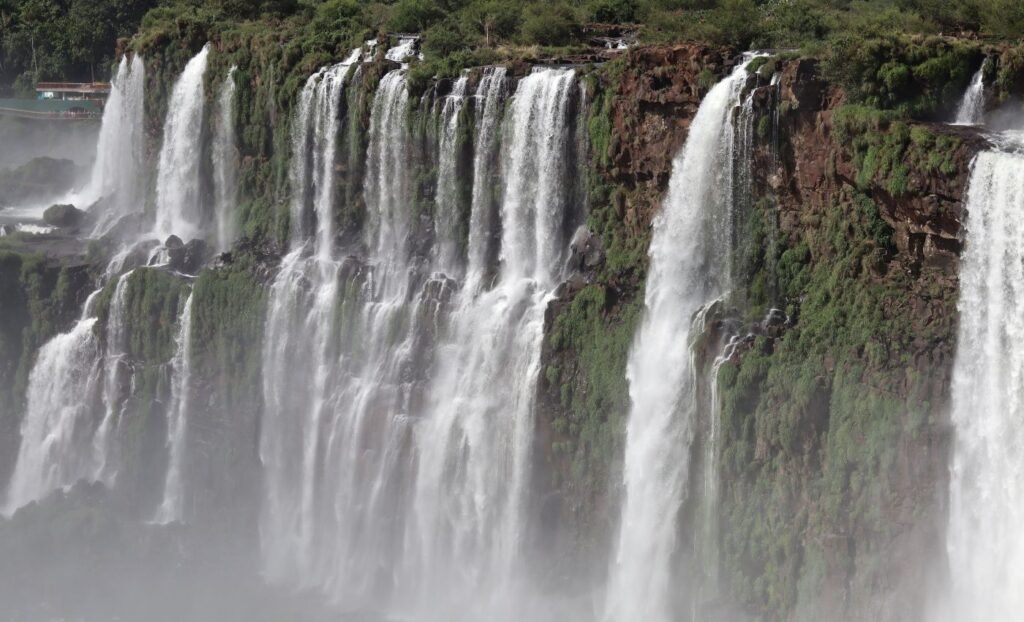
Parque Nacional Iguazú - Argentina
Parque Nacional Iguazu is located in Puerto Iguazu city, in the province of Misiones, northeast of Argentina. It is one of the 39 Argentinian national parks. The park is home to approximately 80% of the falls that form part of the Iguazu waterfall system.
On the Argentinian side, you’ll do more walking since it boasts the majority of the waterfalls, offering plenty of trails to explore. You’ll hike through the lush rainforest and get up close to the falls. The park is open daily from 8 AM to 6 PM, and the time limit to enter is 4:30 PM. If you need a break, there’s a complimentary train that can take you to the next station. The train stops at three main stations: Central, Cataratas, and Garganta del Diablo (Devil’s Throat).
The park is split into three must-see areas: the Upper Circuit, Lower Circuit, and Devil’s Throat.
Tickets to enter the national park can be bought at the park’s entrance or online.
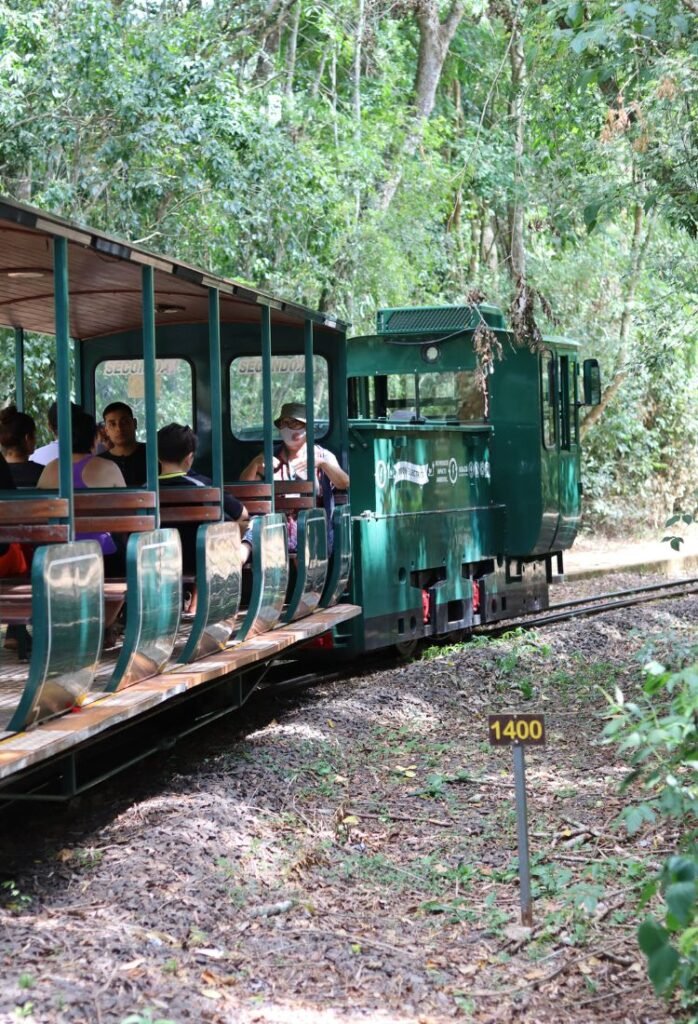
Morning: Upper Trail
Kick off your first day of this Iguazu Falls itinerary with the Upper Trail, a 1.8-kilometre walkway offering breathtaking panoramic views of the horseshoe-shaped cascades. This trail allows visitors to explore the falls from an elevated perspective.
It is also the best trail to get photos of the full falls along with some rainbows due to the reflection of the sun through the mist. Commencing its journey 200 meters from ‘Cataratas Station’, the upper circuit boasts a stair-free route, ensuring ease of access and no challenges along the way.
Extending approximately 1.8 kilometers, completing the circuit typically takes between 90 minutes and 2 hours. Restrooms and a bar can be found at ‘Cataratas Station’ before entering the circuit.
Afternoon: Lower Trail
Next, descend to the Lower Trail for a closer encounter with the waterfalls. This immersive 1.7-kilometre circuit offers a unique perspective and allows visitors to explore the cascades from a lower vantage point, complete with misty sprays that feel refreshing in the tropical heat.
Along the way, you’ll find several scenic lookouts, perfect for capturing postcard-worthy photos.
Keep an eye out for the local flora and fauna, especially the playful coatis! These curious and friendly creatures are a delight to watch—but be careful, as they’re known to sneak off with unattended snacks.
Allocate about 90 minutes for this trail and soak in the power and majesty of the cascades.


Day 2 - Iguazu Falls Argentina Side
Morning: Iguazu Falls Boat Ride
Start your second day with a thrilling ‘Gran Aventura’ boat ride. This journey starts with an immersive 5 km ride through the rainforest on an open-top truck, guided by bilingual experts who will introduce you to the region’s natural and cultural wonders. Once you arrive at Puerto Macuco, you’ll board a rafting boat and navigate through the river, eventually reaching the spectacular San Martin waterfall- the second largest and the highlight of the boat ride. Prepare to get soaked!
Good to Know:
- Tickets are available at the park entrance, with flexible times throughout the day. Or you can book online.
- Duration: 2 hours 15 minutes.
- To keep your belongings safe, a waterproof dry bag is a must. Also, make sure to wear shoes that can handle being drenched, and bring a GoPro or action camera to capture every incredible moment of this thrilling adventure!
Afternoon: The Majestic Devil’s Throat
Good News!🚨📢The walkway to the Devil’s Throat is finally open again as of July 2024, after a long closure due to severe flooding in October 2023. The floods damaged the steel structures, but now it’s ready for visitors to experience this awe-inspiring spectacle.
Imagine a massive U-shaped waterfall that plunges 82 meters into the abyss below and spans a whopping 150 meters in width. It’s not just a sight—it’s the force of nature that you’ll feel in your bones!
To reach this natural marvel, you’ll walk about 2.2 km along a scenic trail, a journey that usually takes around 2 hours. The trail is equipped with footbridges and metal platforms, making it accessible for wheelchairs. If you’d rather save some energy, hop on the Ecological Train and ride to ‘Estación Garganta del Diablo’ (Devil’s Throat Station). From there, it’s just a short 150-meter walk to the viewing platform.
At the end of the walkway, you’ll be rewarded with a breathtaking, up-close view of the 82-meter drop. The sheer power of the water as it cascades down is truly a once-in-a-lifetime experience, there’s no other way to describe it. Standing at the edge, you’ll feel the mist on your face and hear the deafening roar of millions of litres of water crashing into the river below. Trust me, it’s a front-row seat to one of nature’s most impressive shows. Experiencing the Devil’s Throat up close is an unforgettable moment that deserves a prime spot in any Iguazu Falls itinerary!
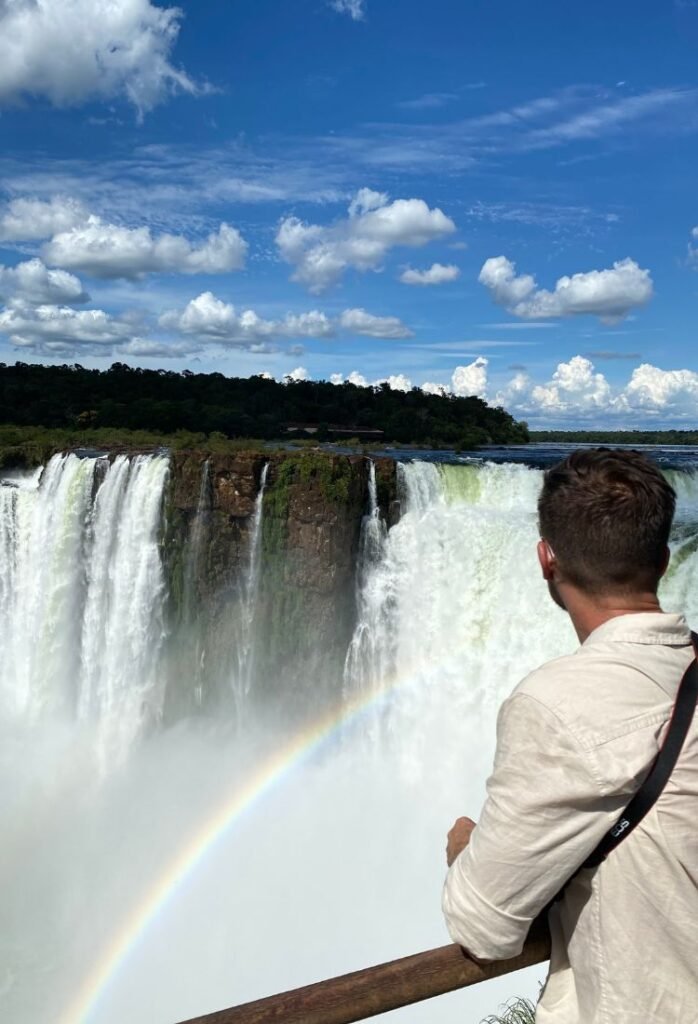
Late Afternoon: Macuco Trail
If time allows, explore the 7-km roundtrip Macuco Trail (Sendero Macuco). This is a hidden gem within the park and I was surprised to know it’s often overlooked by visitors to Iguazu, despite being a fantastic trail through the jungle.
If you’re spending two days exploring the Argentinian side of the national park and have a few hours to spare after doing the two main circuits and Devil’s Throat, this hike is an absolute must.
Unlike the busy trails near the major waterfalls, Sendero Macuco offers a peaceful escape into the heart of the rainforest. It’s a chance to connect with nature on a deeper level—listen to the birdsong, breathe in the fresh air, and enjoy the stillness that surrounds you. The trail leads to a charming viewpoint over the river, followed by a short but steep set of stairs down to a natural pool, complete with a small but beautiful waterfall. If you’re up for it, take a refreshing dip and unwind in this hidden oasis.

PRO TIP: Bring plenty of water—the trail is mostly shaded but can still get hot. And don’t forget to keep an eye out for wildlife! This quieter part of the park is home to a variety of animals that you might miss elsewhere.
Add-on: Full Moon Walk
For five nights each month, the Full Moon Walk offers a magical way to experience Iguazu Falls. The silence of the night brings the murmur of the jungle and the roar of the Devil’s Throat to your ears.
Your journey begins at Central Station, where the Ecological Train takes you through the darkened jungle to Garganta del Diablo Station. From there, you’ll walk along a footbridge over the Upper Iguazu River, illuminated only by the full moon. The endpoint is the mighty Devil’s Throat, where the falls shimmer like silver in the moonlight—a truly unforgettable sight.
Need to Know:
- Tickets are available in the park.
- Duration: 2 hours 30 minutes, with three time slots available.
- The walk may be canceled or postponed due to bad weather.
Where to Stay (Argentina Side)
Puerto Iguazu City offers a diverse range of accommodation options, from budget-friendly hostels to luxurious resorts. I recommend staying near the downtown, close to the restaurants, bars and shops.
However, for a luxurious stay in an unbeatable location, consider Gran Meliá Iguazú. As the only accommodation within the national park, it offers breathtaking views of the waterfalls right from your room.
Hotel Yvera Cataratas is a great budget-friendly choice, offering a pool and an on-site bar. It’s conveniently located in a quiet area near the city centre, just 300 metres from the Triple Frontier landmark
Day 3 - Iguazu Falls Brazil Side
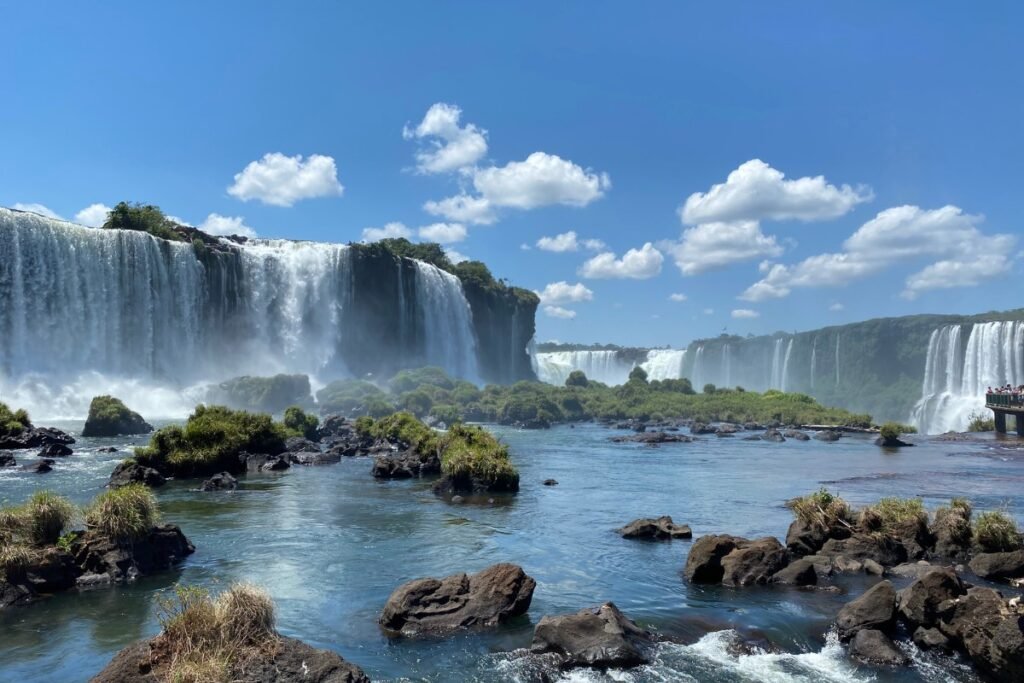
Parque Nacional do Iguaçu (Iguaçu National Park) – Brazil
Parque do Iguaçu is located in the Brazilian city of Foz do Iguaçu, the state of Parana. It is one of Brazil’s 72 national parks, encompasses over 95% of the Iguazu River basin but features just over 20% of the waterfall system’s cascades.
Compared to its Argentinian counterpart, this park offers shorter walks and more expansive panoramic views. It operates year-round, opening from 9 am to 6 pm on weekdays and from 8:30 am to 6 pm on weekends, with the last entry at 4 pm.
The park’s points of interest are linked by a two-story bus, running several times per hour.
Tickets to enter the park can be bought at the park’s entrance or online.
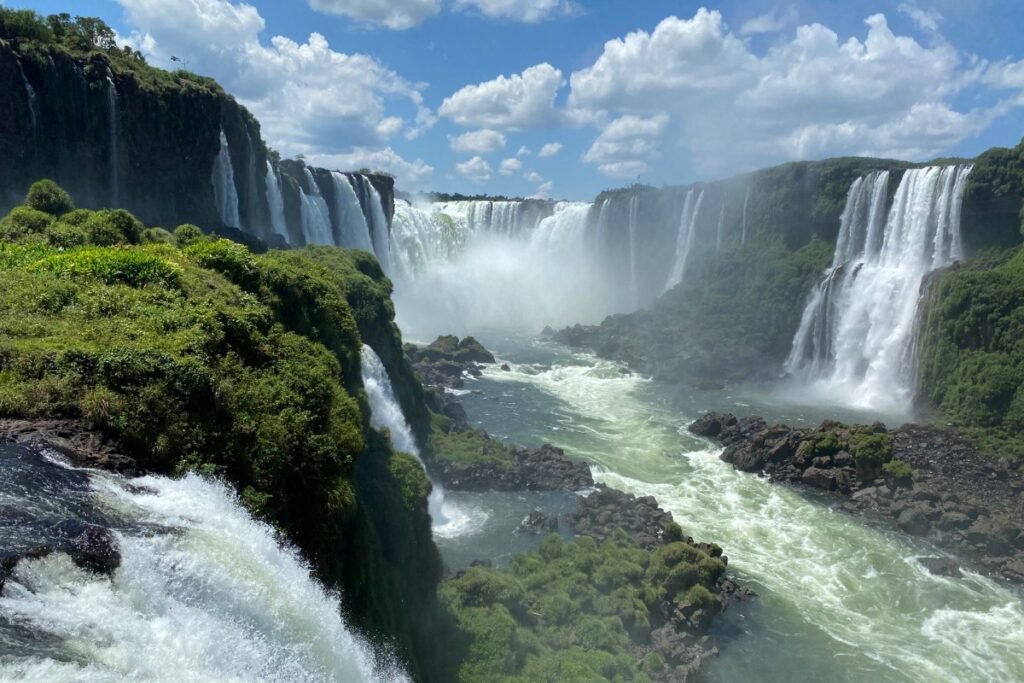
Morning: The Waterfall Trail
Start your third day of adventure by exploring Iguazu Falls from Brazil side. Upon entering the national park, you’ll board a convenient shuttle bus that drops you off at the trail’s starting point, right near the elegant Hotel das Cataratas. From here, your journey along the scenic walking trail begins.
The trail itself is a breeze—flat, well-maintained, and just 1.6 kilometres long, leading you from the starting point to the aptly named The Restaurant. While the walk isn’t strenuous, the tropical heat, humidity, and bustling crowds can make it feel like a slow-paced journey. So, pack water, wear breathable clothing, and take it easy.
What makes this walk unforgettable is the series of breathtaking vantage points along the way. Each stop offers its own unique perspective of the falls, inviting you to pause, snap some photos, and soak in the raw beauty of nature. The closer you get to the end, the more dramatic the views become.
As you near the finish line, you’ll discover a series of platforms with jaw-dropping views of the falls. The icing on the cake? A spectacular, panoramic view of the iconic Devil’s Throat. It’s a sight that will leave you speechless.
Although there are many stairs on the way, the main viewing platform can be accessed via elevator.
Afternoon: Helicopter Ride or Parque das Aves
After exploring the Brazilian side of the park, there’s still plenty of time to enjoy some additional activities nearby. These are not included in the national park entry fee, but incorporating at least one of them into your itinerary is a fantastic way to enhance your 3-day Iguazu Falls itinerary.
Helicopter Ride
While the Brazilian side of Iguazu offers panoramic views of the falls from afar, no viewpoint on land can give you a full view of all 275 cascades that make up this magnificent waterfall system. But from the air, it’s a whole different story! This was my very first helicopter ride, and I couldn’t have picked a more breathtaking location for this incredible experience!
You can book this experience online and it’s available daily from 9 a.m. to 5 p.m.


Parque das Aves
Just across the road from the entrance to the Brazilian side of Iguazu Falls lies Parque das Aves, a lush 16-hectare sanctuary that’s been delighting visitors since 1994. Home to over 1,300 birds from around 130 species, this park offers an immersive experience of Brazil’s incredible birdlife, along with butterflies, reptiles, and insects. It’s a must-visit for bird lovers and wildlife enthusiasts, with winding paths through native woodland and forest habitats providing an up-close look at Latin American fauna.
The park is open daily from 8:30 a.m. to 4:30 p.m., and tickets can be bought online.
Add-on: Macuco Boat Ride
Just like Argentina, the Brazilian side of Iguazu Falls offers an exhilarating boat ride known as the ‘Macuco Safari’. The tour begins with a thrilling jungle safari aboard a 4×4 truck-train, guided by experts who delve into the region’s rich flora and fauna. Towards the conclusion of the jungle safari, there is an option to get off and do a short trail through the jungle on foot.
Then you will descend to the boat dock on a funicular railway. The tour concludes with a 20-minute adventure amidst the falls and river rapids, where getting soaked is all part of the excitement! Remember to pack a change of clothes and a towel.
Good to Know:
- Tickets are available at the park entrance, but can only be bought online with flexible times throughout the day.
- Duration: 2 hours all up (including 20 minute boat ride).
- There is no doubt will get soaked, so prepare accordingly.
Where to Stay (Brazil Side)
While Foz do Iguaçu has plenty of accommodation options, I recommend staying close to the falls if possible and skipping Foz do Iguaçu City altogether as there is not much to see here.
- For luxury, Hotel das Cataratas, the only hotel inside the park, offers exclusive access to the park after hours.
- For affordable 5-star comfort, Complexo Eco Cataratas Resort impresses with its infinity pool, delicious buffet breakfast, and proximity to the park and airport. We had a great stay at this place.
- Budget travellers will enjoy Iguassu Eco Hostel – Eco Suítes, just a short 10-minute walk from the park entrance, offering a relaxing rainforest setting and a swimming pool.
Final Thoughts
Iguazu Falls is truly one of the world’s most breathtaking natural wonders. Whether you decide to get soaked on a boat ride, hike through the rainforest, or simply take in the views, this is one trip you’ll remember forever. Just be sure to give yourself enough time to experience both sides—you won’t regret it! I hope this Iguazu Falls itinerary helps you plan your trip and make the most of this incredible destination.



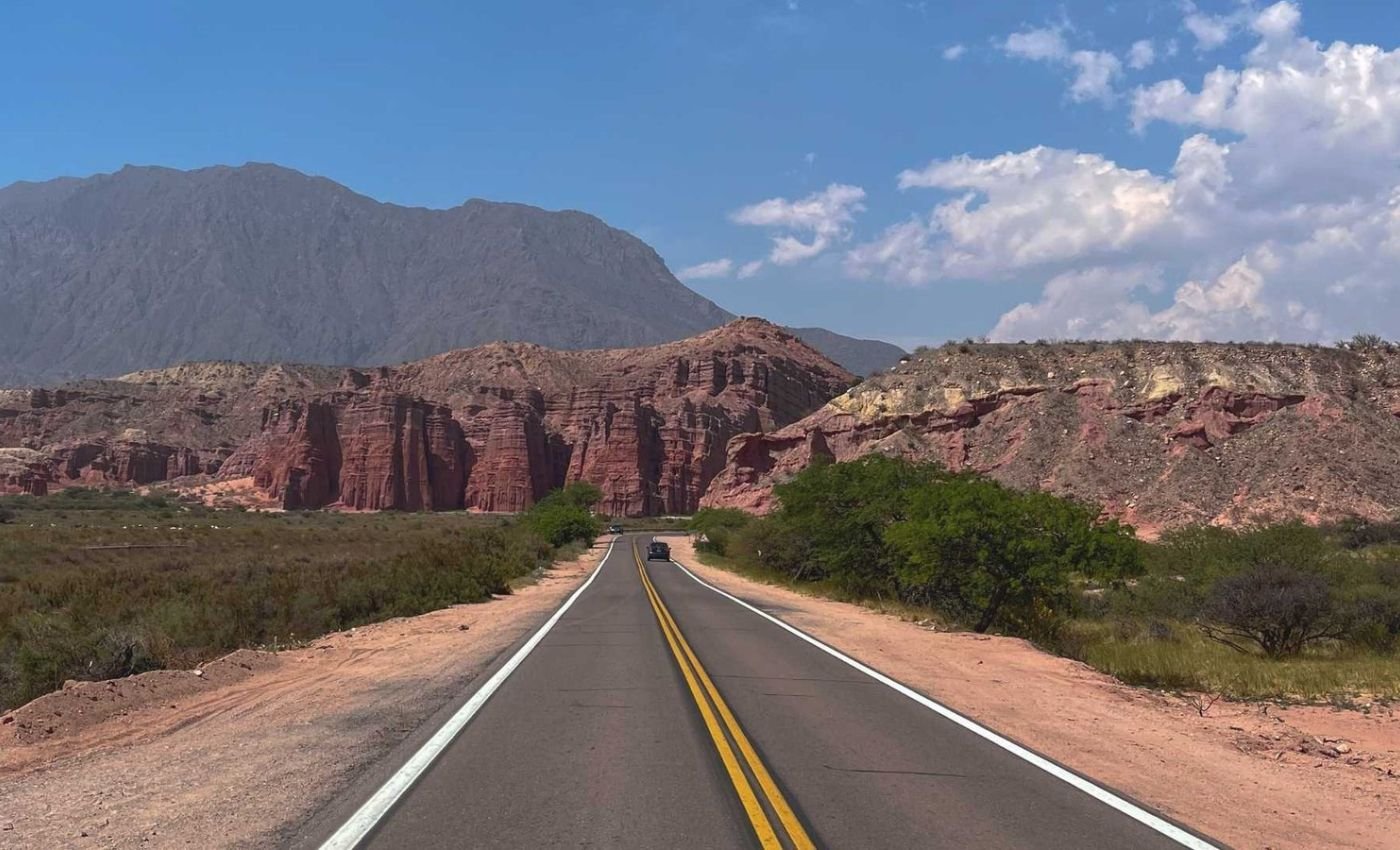
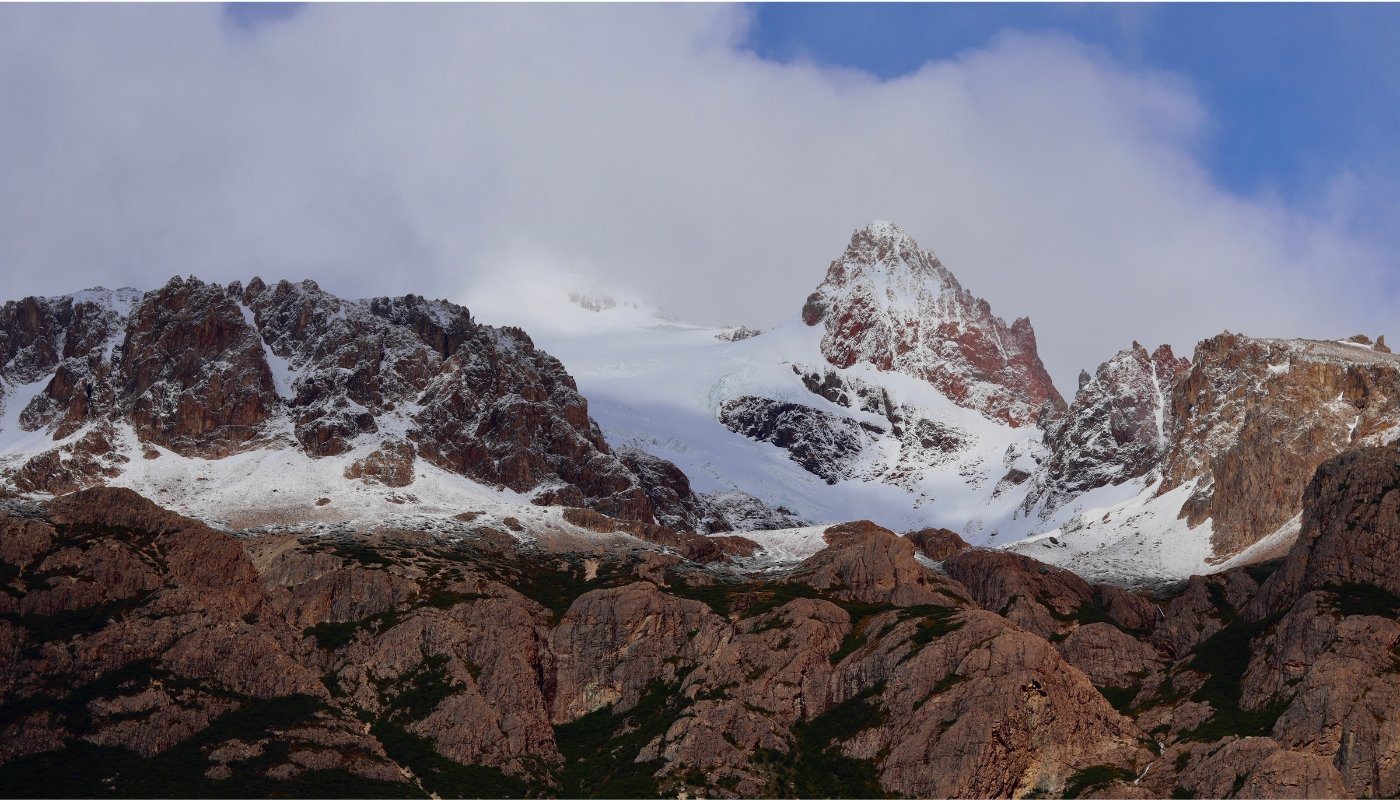
Leave a Reply